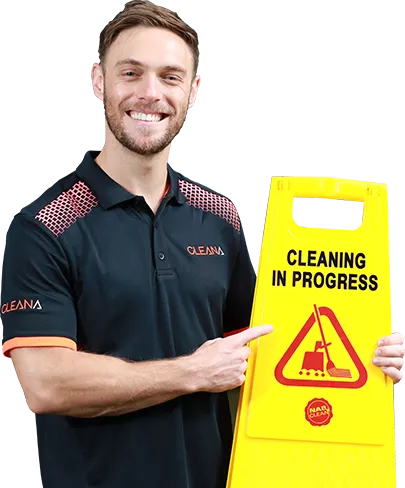Qualified Commercial cleaner is dedicated to ensuring a healthy and safe working environment for its staff by minimizing or removing the risk of personal injury to personnel and minimizing the threat to equipment and plant.
They are required by law to ensure a safe working environment and adhere to strict health and safety standards to protect employees. A company with the best commercial cleaners will achieve this by adhering to relevant legislation, adhering to strict health and safety standards, and taking a comprehensive risk management policy: Employers and/or business owners are required to provide commercial cleaning training to all their employees to comply with the legislation and rules.
The Health and Safety Executive set out guidelines and criteria for workplaces that sets out the obligations of employers to their staff and how they can meet those obligations.
These guidelines are also set out for the safety and welfare of those employed by commercial cleaning services in Australia. The Health and Safety Executive’s (HSE) Code of Practice and safety standards for workplaces apply to best commercial cleaners as well as other professionals who work with or are in contact with the public such as building maintenance staff.
The Health and Safety Executive’s (HSE) Code of Practice and other relevant professional standards and rules are communicated to the best commercial cleaners in the form of professional templates that they need to follow.
Training is provided on these documents so that employees know what to do under every circumstance. Training in specific areas is also available depending on the industry or role of the individual employee. All employees should be provided with an explanation of their role and what they must do in every circumstance.
Training is very important for best commercial cleaners because each day there is a very real risk that they could come into contact with a client’s goods or in an area that has been deemed unsafe or unhygienic. This could include sinks or equipment that has not been properly cleaned or floors that have not been swept.
It may even mean that an individual cleans products that have not been paid for or are faulty. Therefore, it is essential for commercial cleaners to have up-to-date training that deals with the various risks and uses of cleaning. The training should also cover insurance, as any damage or injury can put the company at risk financially.
Another aspect of the health and safety of employees is that commercial cleaning service providers are expected to adhere to the Health and Safety Act of 2011.
The Act sets out the duties of employers and workers and their rights to take action in the event of any breach of those duties.
Therefore, the best commercial cleaners companies need to ensure that all their staff members are aware of their responsibilities to comply with the Health and Safety Regulations for employees working in the same company.
Training also needs to be continuous as new developments occur in the commercial cleaning industry. There are many cases of new chemicals being introduced into the market, which may not be safe.
Therefore, it is important to train all employees on how to identify and use these chemicals and how to dispose of them safely.
It is also essential to train all the best commercial cleaners on how to clean up spills and how to perform other jobs such as carpet cleaning. Training is, therefore, a necessity to ensure compliance by all employees.
One area that is particularly fraught with danger is the floor of commercial cleaners. Carpets and other flooring materials are often very delicate and it is not uncommon for accidents to occur.
In fact, some reports have shown that a large number of injuries occur when cleaning procedures are carried out. For this reason, some franchisees wishing to open a business have decided not to carry out the majority of their work.
Other risks include injuries occurring during training, the lifting of heavy objects, equipment being dropped on customers, and machinery colliding with another vehicle.
All of these types of risks can cause major problems if they occur while a commercial cleaning team is present to do work.
For instance, it could mean delays in getting the building fully cleaned and that could lead to the loss of money. There is also the danger of equipment breaking down on the site causing major inconveniences for clients and employees.
All commercial cleaning companies should ensure that they carry out adequate health and safety training for all of their staff members to avoid such accidents occurring.
The Purpose of a Cleaning Evaluation. If you are planning to hire a commercial cleaning service provider, you should be aware that such service can only be given after the company has performed a thorough and detailed cleaning analysis on your organization.
The results of the evaluation will determine if the commercial cleaning service provider is fit for the purpose. This evaluation will also reveal any weaknesses in your organization, which can later be rectified before starting services. The following are the main reasons why such an evaluation is critical before hiring a commercial cleaning service provider:
Identification of weak areas. A thorough Commercial Cleaning Evaluation will help you identify what areas of your organization require the most cleaning, what cleaning needs should be prioritized, and where the gaps in cleaning service could be filled.
In doing this, you ensure that you are hiring a commercial cleaning Sydney with the right expertise, background, tools, and experience for the job.
Cleaning History. A Commercial Cleaning Evaluation will reveal if the commercial cleaning service provider has been in the business for a while and if they have a good track record. A professional service provider always starts with a clean slate and begins its work with a clean reputation.
This history, coupled with their years in business, builds a level of trust and credibility that can withstand slippages in the future. In addition, the number of years in business is an indicator of the quality of their services and the standard of living of the service provider.
Service Considerations. A thorough Commercial Cleaning Evaluation will consider aspects that may be seen as trivial by the consumer but have a long-term impact on the performance of the company.
These aspects include levels of customer satisfaction, employee engagement, satisfaction levels, breakdowns in service, cleaning frequency, cleaning costs, as well as safety measures.
The evaluation will also consider how quickly service providers address issues and come up with solutions. A service provider which spends more time coming up with solutions and quickly resolves issues and complaints will undoubtedly be more patient than others.
Customer Reliability. Since a commercial cleaning company is handling large and complex projects, they will need to be reliable. For this reason, the service provider should be able to offer references or testimonials from their satisfied customers.
Service providers should use proper methods, equipment, and techniques to keep the premises clean. In addition, they should guarantee their work, have adequate protective gear, and conduct background checks on potential employees.
Teamwork. Good service providers have open communication lines with all of their team members. They also encourage regular team-building exercises and activities to improve productivity and ensure team unity. Such activities may include sporting events, cultural activities, and health days.
Commercial Cleaning Evaluation should not be too long and should cover every aspect of the business. For instance, it should start with a brief explanation of the business and the mission of the service provider.
It should continue to include goals, objectives, services, and features. It should also contain financial analysis, competitive information, management plans, objectives for improvement, and customer service standards.
One can expect a comprehensive Service Assessment Questionnaire from commercial cleaning providers. The questionnaire will be used in evaluating the provider based on the competencies defined in the questionnaire.
After completing the questionnaire, you should be able to obtain a summary report that includes recommendations for improvement.
If you are unsatisfied with the recommendation, you should have a good discussion about it. A review meeting can be held to discuss and review the recommendations.

